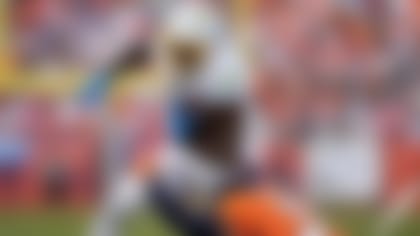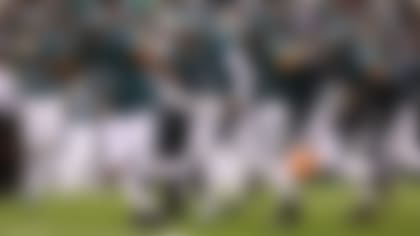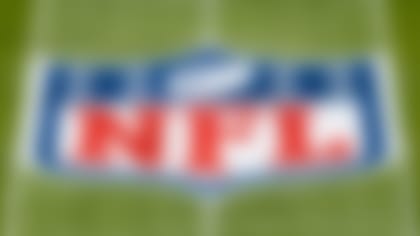At the end of every season, the NFL releases injury data as a part of the league's commitment to sharing progress on its efforts to advance player health and safety. The data are compiled and analyzed by IQVIA; an independent, third-party company retained by the NFL and the NFLPA.
Below are some insights from NFL Executive Vice President overseeing Player Health and Safety Jeff Miller, NFL Chief Medical Officer Dr. Allen Sills, and IQVIA Injury Surveillance and Analytics Epidemiology Director Dr. Mackenzie Herzog on what these numbers mean, and how they'll shape the league's health and safety priorities going forward.
Continued Progress Driving Down Overall Injuries
This season, the NFL saw progress in overall injury reduction efforts and improved player availability – with players missing 700 fewer games during the 2023 regular season due to injury than they did one year ago. This meant that between two and three fewer players were absent from each game throughout the 2023 regular season due to injury than the previous year.
The decrease in the injury burden was driven largely by a decline in lower-extremity injuries, including lower-extremity strains, knee injuries and ACL tears.
Meaningful Progress in Reducing Lower Extremity Injuries
Lower extremity strains – the highest burden injury in terms of time lost among NFL players – reached a four-year low across the preseason and regular season.
Clubs began the 2023 injury prevention process in the offseason by developing individualized, data-driven preseason acclimation strategies to help players reintegrate into football activities at the start of training camp and decrease the risk of injuries as players ramp up to in-season performance levels. These efforts helped drive a 29% decrease in missed time due to lower extremity strains during training camp, compared to 2021 and similar to 2022 when the injury reduction efforts around the preseason ramp-up period began.
Players also experienced a 50% lower recurrence rate of lower extremity injuries this season, in part due to the critical time spent acclimating at the beginning of the season.
"Really, a marker of the successes of this year is that our number of regular season games missed due to lower extremity strains was down 23% compared to 2021 and 2022," said Dr. Herzog. "We're reducing those injuries in early preseason and training camp, and that's really having an impact on players in terms of not only reducing injury but reducing the impact in terms of playing time."
Injury Rates on Turf and Grass Surfaces Were Equal
There was no meaningful difference (0.001) in non-contact lower extremity injury rate between synthetic and natural turf. This is the closest rate between synthetic turf and natural grass surfaces in the last seven years. Experts believe that the type of surface and a player's cleat choice may play a role in non-contact lower extremity injuries.
"We've worked with the NFL and the NFLPA engineers to really define a group of injuries that we believe is most likely to be influenced by shoe-surface interaction, and that is a group of non-direct contact, lower extremity injuries," said Dr. Herzog. "We monitor the injury rate or the number of those injuries per game or the number of player plays on each field. This year, the injury rate on synthetic was virtually identical to the injury rate on grass or natural fields in regular season games."
The league and the NFLPA continue to collaborate to lower injuries on all surface types. This work will continue to be led by the data and analysis gathered by IQVIA and used by the NFL-NFLPA Field Surface Safety & Performance Committee.
Continued Conservative Approach to Concussions
Multi-year strategies to reduce concussions and remove avoidable head impacts from the game continued in 2023. In 2023, concussion numbers largely remained steady compared to the previous season, and significantly lower than the 2015-2017 baseline.
"Obviously, while concussion [numbers] are stable, we want to see them go down," Dr. Sills said. "We believe the game can continue to be made safer, and we're looking at how we can take the number of concussions and overall head impacts down even further."
Dr. Sills emphasized the NFL's ongoing commitment to a cautious, conservative approach to evaluating and diagnosing concussion, with more than 422 concussion evaluations conducted by Unaffiliated Neurotrauma Consultants (UNC) over the course of the season, translating to between three and four evaluations per diagnosed concussion.
Equipment also continues to play a key role in the league's head impact reduction strategy, with data indicating a nearly 50% reduction in preseason practice concussions for players wearing the Guardian Cap for each of the past two seasons, compared to the historical average.
Another encouraging trend is that a significant number of players are self-reporting concussion symptoms, demonstrating an increased recognition of the importance of reporting and the benefits of prompt diagnosis and treatment. This season, 43% of concussion diagnoses had a self-reporting element – underscoring how continued investment in player education is paying off and driving real, positive, cultural changes.
Looking Ahead
Offseason priorities include continued analysis of the hip-drop tackle, and revisiting the kickoff rule to consider how it may be adjusted to reduce concussions more significantly on the play after concussions on kickoffs held steady in the first year under the rule change. Concussions sustained on the kickoff play dropped by 60 percent this season, from 20 to eight.
"We want to try to find a way to keep the foot in the game, making that play exciting and yet make it less risky than the previous version of it," Miller said.
The NFL also plans to examine how concussions and head impacts can be reduced even further, by assessing strategies to address areas such as high-volume head impacts – particularly among the offensive and defensive lineman positions – and high-risk, high-velocity head impacts.
There will be additional consideration of further incorporating the latest advancements in helmet technology and protective equipment to build on the progress being made through new innovations such as the Guardian Cap and position-specific helmets.
The league will continue to drive tailored strategies to advance injury reduction efforts through individualized, data-driven approaches to training, further investments in position-specific equipment and ongoing efforts toward consistency across all playing surfaces.











